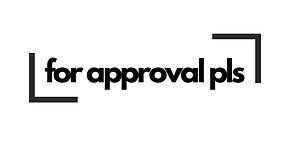02 Sorting out Sentence Structure
- andreaphua
- May 22
- 3 min read
Subject-Verb Agreement: The Heartbeat of a Sentence
At the most basic level, every sentence needs a subject and a verb that agree in number. If the subject is singular, the verb must also be singular. If the subject is plural, the verb must be plural.
Incorrect: The compliance framework for AI systems require periodic audits.
Correct: The compliance framework for AI systems requires periodic audits.
Here, framework is the subject—not AI systems. It’s singular, so the verb must be requires. In long or technical sentences, it’s easy to misidentify the subject, leading to agreement errors that confuse readers or slow down comprehension.
Compound Subjects: Singular or Plural?
When two subjects are joined by and, the verb usually becomes plural. But when the compound subject refers to a single concept or entity, it remains singular.
Plural: Encryption and access control are key elements of secure system design.
Singular (compound concept): Data protection and privacy is a growing concern in cross-border digital transactions.
In the second example, the sentence refers to data protection and privacy as a unified field of concern, not as two separate topics. Understanding when two ideas function as one can prevent missteps in agreement and tone.
Phrases and Clauses: Shifting the Meaning
Phrases and subordinate clauses add depth to a sentence — but they can also create confusion if not placed carefully.
A common problem is the misplaced modifier, where the meaning of the sentence is unintentionally altered.
Unclear: To improve transparency, the data logs were reviewed by engineers with limited public access.
Who had limited public access—the engineers or the logs?
Clearer version: To improve transparency, engineers reviewed the data logs, which had limited public access.
When writing about technical systems like audit trails, training data, or model interpretability, misplacing a clause can drastically change the meaning of a sentence. This is particularly dangerous in digital policy, where documents are scrutinized for nuance and legal precision.
Why It Matters: The Risk of Misinterpretation
Poor sentence structure does more than frustrate the reader—it risks misinterpretation. A digital policy document with ambiguous structure may lead to inconsistent implementation, legal uncertainty, or flawed public communication.
Take this example: “The model’s performance, which was benchmarked against proprietary standards and external datasets were inconsistent.”
Here, it’s not clear what was inconsistent—the performance, the standards, or the datasets? Also, performance is singular, but it incorrectly pairs with were.
Improved: The model’s performance was inconsistent, even though it was benchmarked against both proprietary standards and external datasets.
This version restores subject-verb agreement and clarifies the relationship between the components of the sentence.
Translating Engineering Language into Clear English
Technical documents often use complex constructions like: “A decentralized ledger was implemented using Byzantine fault-tolerant consensus mechanisms to enhance network resilience.”
While accurate, this can be challenging for non-specialist readers.
A clearer sentence might read: “To make the network more resilient, engineers used a type of consensus method designed to keep decentralized systems running even when some parts fail.”
This reframing keeps the technical accuracy but improves accessibility—a vital skill when bridging the worlds of policy and engineering.
Final Thought: Structure Reflects Thought
A well-structured sentence is a reflection of clear thinking. In digital policy, where ideas often sit at the intersection of technology, law, and society, poor sentence structure can make complex matters harder to understand, debate, or act upon.
As a writer, your responsibility is not just to be correct, but to be clear. Paying attention to the bones of your writing — subject-verb agreement, logical clauses, and accurate modifiers — ensures your work supports meaningful discourse, rather than muddling it.
Better sentence structure doesn’t just improve your writing. It improves your impact.

